Intellectual property (IP) is a critical asset for many businesses, encapsulating the innovative ideas, creative works, and unique products that contribute to a company’s success. As companies increasingly recognize the importance of IP in their business strategy, accurately valuing these assets becomes essential for informed decision-making. In this article, we will delve into the various aspects of valuing intellectual property, its significance, different valuation approaches, challenges inherent in the process, and its relevance in mergers and acquisitions.
Understanding Intellectual Property
To value intellectual property effectively, it’s essential first to understand what IP entails. Intellectual property is a legal concept granting creators exclusive rights to their inventions and ideas. This encompasses various forms, each of which plays a unique role in the market.
Definition of Intellectual Property
Intellectual property refers to creations of the mind, including inventions, literary and artistic works, designs, symbols, names, and images used in commerce. The fundamental premise of intellectual property rights is to promote innovation and creativity by providing creators with a protected space where they can exploit their creations without fear of unauthorized use by others. This protection not only incentivizes individuals and businesses to invest time and resources into developing new ideas but also fosters an environment where creativity can flourish, leading to advancements in technology, culture, and society as a whole.
Types of Intellectual Property
There are several types of intellectual property, each with distinct characteristics:
- Patents: Legal protections for inventions, granting the patent holder exclusive rights to produce, use, or sell the invention for a specific period.
- Trademarks: Signs, logos, or words that distinguish the goods or services of one entity from those of others.
- Copyrights: Protects the expression of ideas, such as music, literature, films, and software.
- Trade Secrets: Confidential information that provides a competitive edge, such as formulas, practices, and processes.
Each type of intellectual property serves a specific purpose in the marketplace. For instance, patents not only safeguard inventors but also encourage the dissemination of knowledge, as patent applications often require a detailed description of the invention, which can inspire future innovations. Similarly, trademarks help consumers identify the source of products and services, fostering brand loyalty and trust.
Copyrights, on the other hand, ensure that creators can control how their works are used and distributed, allowing them to benefit financially from their creativity. Trade secrets, while less formalized, play a crucial role in industries where maintaining confidentiality can lead to significant competitive advantages, such as in technology and food production.
The Importance of Valuing Intellectual Property
The valuation of intellectual property is not merely an academic exercise; it has profound implications for businesses. Understanding how to quantify these intangible assets enhances strategic planning and decision-making.
Role in Business Strategy
Intellectual property plays a vital role in shaping business strategies. A well-defined IP strategy can enhance product differentiation, foster innovation, and create barriers to entry for competitors. By understanding the value of their intellectual property, companies can leverage these assets to gain competitive advantages and drive market growth. Furthermore, an effective IP strategy can facilitate partnerships and collaborations, as businesses with robust intellectual property portfolios are often seen as more attractive partners. This can lead to joint ventures, licensing agreements, and other collaborative efforts that further enhance a company’s market presence and technological capabilities.
Impact on Company Valuation
The valuation of intellectual property is integral to a company’s overall valuation. Investors and acquisition firms often consider IP assets during their assessment processes. A strong portfolio of intellectual property can lead to higher market valuations and potential investment opportunities. For instance, a company with patented technology may find its valuation significantly enhanced due to the legal protections surrounding its innovations.
Additionally, the presence of intellectual property can serve as a risk mitigation tool, as it provides a safeguard against market fluctuations and competitive pressures. Companies with well-protected IP are often perceived as more stable investments, attracting a wider range of investors who are looking for long-term growth potential.
Legal and Regulatory Considerations
Understanding the legal landscape surrounding intellectual property is crucial for businesses aiming to maximize the value of their assets. Different jurisdictions have varying laws and regulations regarding IP protection, which can significantly impact how a company manages its intellectual property portfolio. For example, the process of securing patents can be lengthy and complex, often requiring substantial legal expertise.
Companies must also stay informed about changes in IP law, as shifts in legislation can alter the competitive landscape and affect the valuation of existing patents and trademarks. Moreover, businesses must be vigilant in enforcing their intellectual property rights to prevent infringement, which can dilute their brand and reduce the overall value of their IP assets.
Approaches to Valuing Intellectual Property
Valuing intellectual property is a complex process impacted by various factors. Different approaches can yield different valuations, and understanding these methods can assist businesses in selecting the most appropriate strategy. The significance of accurately valuing intellectual property cannot be overstated, as it plays a crucial role in mergers and acquisitions, licensing agreements, and even in securing financing. As businesses increasingly recognize the importance of their intangible assets, the need for robust valuation methods becomes even more critical.
Cost Approach
The cost approach estimates the value of intellectual property based on the costs required to recreate it. This method considers the expenses involved in research and development, prototyping, and marketing. While practical for some types of IP, the cost approach may not capture the full market potential or future earning capacity of the asset. Additionally, this approach can be particularly useful for valuing proprietary technologies or processes, where the investment in development can be quantified. However, it is important to note that the cost approach may overlook the competitive advantages that the IP provides, which can significantly enhance its overall value in the marketplace.
Market Approach
The market approach determines the value of intellectual property by comparing it to similar assets that have been sold or licensed in the marketplace. This method relies on market data and transactions that provide insights into how much buyers or licensees have paid for comparable IPs. While this approach offers a perspective rooted in current market conditions, challenges arise regarding the availability of comparable transactions.
In many cases, intellectual property is unique, making it difficult to find truly comparable assets. Furthermore, market fluctuations can influence valuations, requiring businesses to stay informed about industry trends and shifts in demand for specific types of intellectual property.
Income Approach
The income approach estimates the value of intellectual property based on the anticipated future cash flows generated by the asset. This method considers various financial metrics, focusing on the net present value of expected earnings attributable to the intellectual property. Accurately forecasting these earnings can be complex and necessitates detailed analysis.
Factors such as market conditions, competition, and regulatory changes can all impact future cash flows, making it essential for businesses to conduct thorough market research and financial modeling. Additionally, the income approach often requires a deep understanding of the specific industry and the role of the intellectual property within that context, as different sectors may experience varying levels of profitability and risk associated with their intangible assets.

Challenges in Intellectual Property Valuation
Despite the importance of valuing intellectual property, several challenges can complicate the process. Acknowledging these obstacles is critical for a more accurate assessment.
Legal Considerations
Legal elements play a fundamental role in IP valuation. The scope, duration, and enforceability of intellectual property rights vary significantly across regions and jurisdictions. Companies must navigate these legal landscapes to genuinely understand how their IP will perform and be valued in various markets.
Furthermore, the complexity of international treaties and agreements, such as the TRIPS Agreement, adds another layer of intricacy, as businesses must align their strategies with both local laws and global standards. This can lead to significant discrepancies in valuation if not carefully managed, as a patent that is robust in one country may face challenges in another, impacting its overall worth.
Technological Changes
The rapid pace of technological advancements can impact the relevance and value of certain intellectual properties. An innovation that is valuable today may become obsolete tomorrow. Consequently, valuators need to consider how emerging technologies may alter competitive dynamics and the lifespan of specific IP assets. For instance, the rise of artificial intelligence and machine learning has transformed industries, making previously valuable patents less relevant or even redundant.
Additionally, the integration of technology into traditional sectors can create new forms of IP that require novel valuation methods, emphasizing the need for continuous education and adaptation among valuators to keep pace with these changes.
Market Volatility
The dynamic nature of markets can lead to fluctuations in IP valuation. As consumer preferences and economic conditions shift, the corresponding value of intellectual property can also change. Companies seeking to value their IP must remain vigilant about these market forces to maintain accuracy in their valuations. Market trends, such as the increasing consumer demand for sustainability and ethical practices, can significantly influence the desirability of certain IP assets.
Companies that hold patents or trademarks aligned with these values may see an increase in their worth, while those that do not may face declining valuations. This necessitates a proactive approach to IP management, where businesses not only monitor market conditions but also anticipate shifts and adjust their IP strategies accordingly.
Intellectual Property Valuation in Mergers and Acquisitions
Valuing intellectual property is particularly crucial during mergers and acquisitions (M&A) due to the potential impact on deal negotiations and overall transaction success.
Due Diligence Process
During the due diligence process in M&A, acquiring companies must assess the target’s IP assets to understand their valuation accurately. This assessment helps identify risks and opportunities associated with IP and informs negotiation strategies. Companies often engage valuation experts to ensure they grasp the full extent of the target’s intellectual property portfolio. These experts utilize various methodologies, such as the income approach, market approach, and cost approach, to derive a comprehensive valuation. Each method offers unique insights, allowing stakeholders to appreciate the potential revenue streams generated by patents, trademarks, copyrights, and trade secrets.
Negotiation and Deal Structuring
Effective negotiation regarding intellectual property can significantly influence the structure of an acquisition deal. A comprehensive understanding of the IP’s value can empower both buyers and sellers to reach mutually beneficial terms, ensuring fair compensation and protecting future interests. Companies must adeptly navigate these discussions to secure advantageous deal conditions related to IP.
Moreover, the presence of strong IP assets can enhance a company’s bargaining power, potentially leading to more favorable terms such as earn-outs or performance-based incentives that align with the long-term potential of the acquired IP. Additionally, the strategic integration of IP into the overall business model after an acquisition can unlock synergies that drive innovation and market expansion.
Furthermore, the evolving landscape of technology and digital assets has introduced new complexities in IP valuation. As businesses increasingly rely on software, algorithms, and digital content, understanding the value of these intangible assets becomes paramount. The rise of artificial intelligence and blockchain technology, for instance, has created new forms of intellectual property that require specialized valuation techniques. Companies must stay abreast of these trends to ensure they are not only valuing existing IP accurately but also recognizing emerging assets that could play a pivotal role in future growth and competitive advantage.
Conclusion
In conclusion, we delved into the numerous aspects of valuing intellectual property, its significance, different valuation approaches, challenges inherent in the process, and its relevance in mergers and acquisitions., As companies increasingly recognize the importance of intellectual property in their business strategy, accurately valuing these assets becomes crucial for informed decision-making.
Computer Packages Inc. (CPI) is a privately owned IP management company with over fifty years of experience serving the IP community. Our mission is to be the most trusted partner in safeguarding clients’ IP assets with innovative IP management software and annuity services. Learn how we specialize in IP patent, trademark, and annuity management by exploring our services.


